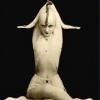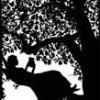Search the Community
Showing results for tags 'BPAL 13th Anniversary'.
Found 10 results
-
The Phoinix knows how to reckon five hundred years without the aid of arithmetic, for it is a pupil of all-wise nature, so that it has no need of fingers or anything else to aid it in the understanding of numbers. The purpose of this knowledge and the need for it are matters of common report. But hardly a soul among the Aigyptoi knows when the five-hundred-year period is completed; only a very few know, and they belong to the priestly order. But in fact the priests have difficulty in agreeing on these points, and banter one another and maintain that it is not now but at some date later than when it was due that the divine bird will arrive. Meantime while they are vainly squabbling, the bird miraculously guesses the period by signs and appears. And the priests are obliged to give way and confess that thy devote their time ‘to putting the sun to rest with their talk’; but they do not know as much as birds. But, in God’s name, is it not wise to know where Aigyptos is situated, where Heliopolis whither the bird is destined to come, and where it must bury its father and in what kind of coffin? Golden amber and patchouli with fiery peppercorn, cocoa, white cedar, neroli, vanilla pod, and frankincense. To me this seemed the perfect blend of sweet and fire, and I was very happy with the result. In the bottle a lot of dry cocoa and sweet vanilla come wafting out with a little bit of frankincense and patchouli in the background. On wet peppery cocoa at the front, with patchouli and cedar definitely making their presence known. A little frankincense and vanilla. Much woodier than it had been in the bottle, but not necessarily masculine. No neroli to be found yet. As it dries the patchouli and cedar back off, and the resins come forward. The longer it's on the more amber and frankincense I smell. It's a nice smoky-sweet scent. Peppery cocoa, resin, and little bit of wood and vanilla. After six hours it's primarily amber and frankincense but it's lingering very well. Overall, a very beautiful, smoldering scent. It doesn't smell like a phoenix fully aflame, or the dying ashes. It's the warmth of the very moment the fire begins.
-
And the Phoinix, Iarkhas said, is the bird which visits Aigyptos every five hundred years, but the rest of that time it flies about in India; and it is unique in that it gives out rays of sunlight and shines with gold, in size and appearance like an eagle; and it sits upon the nest; which is made by it at the springs of the Nile out of spices. The story of the Aigyptoi about it, that it comes to Aigyptos, is testified to by the Indians also, but the latter add this touch to the story, that the Phoinix which is being consumed in its nest sings funeral strains for itself. And this is also done by the swans according to the account of those who have the wit to hear them. Rays of sunlight, shining with gold: amber glittering with orange blossom, Calabrian lemon, warm saffron, golden vegetal musk, and honeyed incense. Ooo, this one is very distinct. It has a strong, sunny neroli top-note to it, and gives a very 'golden' feel overall. After a few seconds, the amber and saffron come out and round this out into a gorgeous scent that is quite reminiscent of very well aged Vixen. The lemon, thankfully, stays in the background, just adding to the brightness of the scent without being obvious. The amber takes forefront at the end of drydown, and the musk and incense finally show up also. This one is going to age AMAZINGLY!
-
Then copious poisons from the moon distils Mixed with all monstrous things which Nature’s pangs Bring to untimely birth; the froth from dogs Stricken with madness foaming at the stream; A lynx’s entrails and the knot that grows Upon the fell hyaena; flesh of stags Fed upon serpents and the sucking fish Which holds the vessel back though eastern winds Make bend the canvas; dragon’s eyes; and stones That sound beneath the brooding eagle’s wings. Nor Araby’s viper, nor the ocean snake Who in the Red Sea waters guards the shell, Are wanting; nor the slough on Libyan sands By horned reptile cast nor ashes fail Snatched from an altar where the Phoenix died Copious poisons from the moon distils: frankincense, mugwort, toxic moonseed, lemon balm, pale yellow musk seed, and elemi. First ... oh, the pressure! I honestly had no idea what to expect here ... Anything with frankincense gets a head start and ditto for musk, but the other notes were either unfamiliar or of possible concern. IMP: Getting zero frankincense or musk here ... totally acidic, citrus, even a little bit sour (maybe tart would be a better word, because it's not BAD sour, just not sweet). Maybe the lemon? Maybe the mugwort? WET: LIME LOLLIPOPS! Putting that in all caps because as soon as I applied this the image just jumped right into my mind ... the kind of my childhood that they'd scotch-tape onto birthday presents at our local toy store, with the clear ruffle cellophane wrappers. DRY: The drydown on this is very quick and leaves barely a trace of the scent on me. At the end, it's only the faintest bit of citrus. OVERALL: While it's not a keeper for me, it was actually a really fun "experience" to have such a blast from the past scent memory from childhood.
-
Phoenix is a bird, and there is but one of that kind in all the wide world. Therefore lewd men wonder thereof, and among the Arabs, there this bird is bred, he is called singular–alone. The philosopher speaketh of this bird and saith that phoenix is a bird without make, and liveth three hundred or five hundred years: when the which years are past, and he feeleth his own default and feebleness, he maketh a nest of right sweet-smelling sticks, that are full dry, and in summer when the western wind blows, the sticks and the nest are set on fire with burning heat of the sun, and burn strongly. Then this bird phoenix cometh willfully into the burning nest, and is there burnt to ashes among these burning sticks, and within three days a little worm is gendered of the ashes, and waxeth little and little, and taketh feathers and is shapen and turned to a bird. Ambrose saith the same in the Hexameron: Of the humours or ashes of phoenix ariseth a new bird and waxeth, and in space of time he is clothed with feathers and wings and restored into the kind of a bird, and is the most fairest bird that is, most like to the peacock in feathers, and loveth the wilderness, and gathereth his meat of clean grains and fruits. Alan speaketh of this bird and saith, that when the highest bishop Onyas builded a temple in the city of Heliopolis in Egypt, to the likeness of the temple in Jerusalem, on the first day of Easter, when he had gathered much sweet-smelling wood, and set it on fire upon the altar to offer sacrifice, to all men’s sight such a bird came suddenly, and fell into the middle of the fire, and was burnt anon to ashes in the fire of the sacrifice, and the ashes abode there, and were busily kept and saved by the commandments of the priests, and within three days, of these ashes was bred a little worm, that took the shape of a bird at the last, and flew into the wilderness. The fire of the sacrifice: scorched, honeyed cedar and carob wood aflame with amber, cinnamon, and red sandalwood. Got this today! In the bottle, very spicy. You could definitely tell that there was cinnamon in there. The woods (cedar over carob) were pretty heavy, too. The "black/burny"-ness was present, as well. Didn't get a big whiff of amber - I had to really smell deeply. I put it on. Smells like an autumn festival had a bonfire. The "flame" is strong with this one - but not in a super overpowering way. Still not getting much amber - the carob wood is stronger than the cedar wood now. I've waited awhile (an hour and a half) - still going strong. I was afraid that the throw wouldn't be good on it, but it's actually gotten kind of stronger smelling since it's been worn.... I get a strong whiff every now and then while typing, and it kind of gently lingers in between. As for scents, amber and sandalwood take the front stage, with a present cinnamon (not very strong, but you can pick it apart) background. The cedar is poking a little ahead of the carob wood, and it's still got that smoky "bonfire" smell going. Before, it smelled like an active fire - now that it's set in, it smells like a smouldering fire.
-
In Egypt is the city of Heliopolis, that is to say, the city of the Sun. In that city there is a temple, made round after the shape of the Temple of Jerusalem. The priests of that temple have all their writings, under the date of the fowl that is clept phoenix; and there is none but one in all the world. And he cometh to burn himself upon the altar of that temple at the end of five hundred year; for so long he liveth. And at the five hundred years’ end, the priests array their altar honestly, and put thereupon spices and sulphur vif and other things that will burn lightly; and then the bird phoenix cometh and burneth himself to ashes. And the first day next after, men find in the ashes a worm; and the second day next after, men find a bird quick and perfect; and the third day next after, he flieth his way. And so there is no more birds of that kind in all the world, but it alone, and truly that is a great miracle of God. And men may well liken that bird unto God, because that there ne is no God but one; and also, that our Lord arose from death to life the third day. This bird men see often-time fly in those countries; and he is not mickle more than an eagle. And he hath a crest of feathers upon his head more great than the peacock hath; and is neck his yellow after colour of an oriel that is a stone well shining, and his beak is coloured blue as ind; and his wings be of purple colour, and his tail is barred overthwart with green and yellow and red. And he is a full fair bird to look upon, against the sun, for he shineth full gloriously and nobly. Sulphur and myrrh crackling with clove, Himalayan cedar, and red sandalwood. This was pretty much a no brainer blind bottle for me from this year's Phoenixes. But I was still really curious about it for a couple reasons. All of the listed notes are winners on me, but I had never tried a blend with (I think) any of them in combination. I was especially curious as to how the clove would play with the woods and myrrh. And what was the sulphur going to be? Mandeville's Phoenix opens with myrrh brightened by something I can't place (maybe it's the cedar? it almost has a slightly citrusy feel). I was expecting vetiver to stand in for "sulphur" but I'm not getting any. After about a minute the clove and sandalwood start to add a little depth, but the myrrh is still dominant. After a few minutes, this is mostly myrrh and sandalwood with a little bit of clove. Myrrh has obvious funerial / ecclesiastical connotations and sandalwood always feels like such a serious note to me, so while this is certainly a sort of melancholic blend, the clove is a really interesting touch that adds some warmth and playfulness. The longer this stays on, the more the other woods come out and the less myrrh-dominant it is (although the myrrh sticks around, for sure). The cedar averse shouldn't be wary of this blend, it mostly just stays in the background adding some welcome brightness. This fits in well with my collection, perhaps a little toooooo well given my other myrrh loves, but this blend is pretty special and I would recommend it to any myrrh or sandalwood fans! ETA: Now that this has had some time to settle, I am getting some smokiness midway through the drydown. I love a smoky scent! But this phase also lasts maybe an hour so I wouldn't be too concerned if that puts you off.
-
There is a leafy wood fringed by Oceanus’ farthest marge beyond the Indes and the East where Dawn’s panting coursers first seek entrance; it hears the lash close by, what time the watery threshold echoes to the dewy car; and hence comes forth the rosy morn while night, illumined by those far-shining wheels of fire, casts off her sable cloak and broods less darkly. This is the kingdom of the blessèd bird of the sun where it dwells in solitude defended b the inhospitable nature of the land and immune from the ills that befall other living creatures; nor does it suffer infection from the world of men. Equal to the gods is that bird whose life rivals the stars and whose renascent limbs weary the passing centuries. It needs no food to satisfy hunger nor any drink to quench thirst; the sun’s clear beam is its food, the sea’s rare spray its drink–exhalations such as these form its simple nourishment. A mysterious fire flashes from its eyes, and a flaming aureole enriches its head. Its crest shines with the sun’s own light and shatters the darkness with its calm brilliance. Its legs are of Tyrian purple; swifter than those of the Zephyrs are its wings of flower-like blue dappled with rich gold. Never was this bird conceived nor springs it from any mortal seed, itself is alike its own father and son, and with none to recreate it, it renews its outworn limbs with a rejuvenation of death, and at each decease wins a fresh lease of life. For when a thousand summers have passed far away, a thousand winters gone by, a thousand springs in their course given to the husbandmen that shade of which autumn robbed them, then at last, fordone by the number of its years, it falls a victim to the burden of age; as a tall pine on the summit of Caucasus, wearied with storms, heels over with its weight and threatens at last to crash in ruin; one portion falls by reason of the unceasing winds, another breaks away rotted by the rain, another consumed by the decay of years. Now the Phoenix’s bright eye grows dim and the pupil becomes palsied by the frost of years, like the moon when she is shrouded in clouds and her horn beings to vanish in the mist. Now his wings, wont to cleave the clouds of heaven, can scarce raise them from the earth. Then, realizing that his span of life is at an end and in preparation for a renewal of his splendour, he gathers dry herbs from the sun-warmed hills, and making an interwoven heap of the branches of the precious tree of Saba he builds that pyre which shall be at once his tomb and his cradle. On this he takes his seat and as he grows weaker greets the Sun with his sweet voice; offering up prayers and supplications he begs that those fires will give him renewal of strength. Phoebus, on seeing him afar, checks his reins and staying his course consoles his loving child with these words: ‘Thou who art about to leave thy years behind upon yon pyre, who, by this pretence of death, art destined to rediscover life; thou whose decease means but the renewal of existence and who by self-destruction regainest thy lost youth, receive back thy life, quit the body that must die, and by a change of form come forth more beauteous than ever.’ So speaks he, and shaking his head casts one of his golden hairs and smites willing Phoenix with its life-giving effulgence. Now, to ensure his rebirth, he suffers himself to be burned and in his eagerness to be born again meets death with joy. Stricken with the heavenly flame the fragrant pile catches fire and burns the aged body. The moon in amaze checks her milk-white heifers and heaven halts his revolving spheres, while the pyre conceives the new life; Nature takes care that the deathless bird perish not, and calls upon the sun, mindful of his promise, to restore its immortal glory to the world. Straightway the life spirit surges through his scattered limbs; the renovated blood floods his veins. The ashes show signs of life; they begin to move though there is none to move them, and feathers clothe the mass of cinders. He who was but now the sire comes forth from the pyre the son and successor; between life and life lay but that brief space wherein the pyre burned. His first delight is to consecrate his father’s spirit by the banks of the Nile and to carry to the land of Aegyptus the burned mass from which he was born. With all speed he wings his way to that foreign strand, carrying the remains in a covering of grass. Birds innumerable accompany him, and whole flocks thereof throng in airy flight. Their mighty host shuts out the sky where’er it passes. But from among so vast an assemblage none dares outstrip the leader; all follow respectfully in the balmy wake of their king. Neither the fierce hawk nor the eagle, Jove’s own armour-bearer, fall to fighting; in honour of their common master a truce is observed by all. Thus the Parthian monarch leads his barbarous hosts by yellow Tigris’ banks, all glorious with jewels and rich ornament and decks his tiara with royal garlands; his horse’s bridle is of gold, Assyrian embroidery embellishes his scarlet robes, and proud with sovereignty he lords it o’er his numberless slaves. There is in Aegyptus a well-known city celebrated for its pious sacrifices and dedicated to the worship of Ra. Its temples rest on a hundred columns hewn from the quarries of Thebes. Here, as the story tells, the Phoenix is wont to store his father’s ashes and, adoring the image of the god, his master, to entrust his precious burden to the flames. He places on the altar that from which he is sprung and that which remains of himself. Bright shines the wondrous threshold; the fragrant shrine is filled with the holy smoke of the altar and the odour of Indian incense, penetrating even as far as the Pelusiac marshes, fills the nostrils of men, flooding them with its kindly influence and with a scent sweeter than that of nectar perfumes the seven mouths of the dark Nile. Happy bird, heir to thine own self! Death which proves our undoing restores thy strength. Thine ashes give thee life and though thou perish not thine old age dies. Thou hast beheld all that has been, hast witnessed the passing of the ages. Thou knowest when it was that the waves of the sea rose and o’erflowed the rocks, what year it was that Phaëthon’s error devoted to the flames. Yet did no destruction overwhelm thee; sole survivor thou livest to see the earth subdued; against thee the Fates gather not up their threads, powerless to do thee harm. Sole survivor thou livest to see the earth subdued; against thee the Fates gather not up their threads, powerless to do thee harm: red patchouli, sweet frankincense, and the figs and pomegranates of the seven mouths of the dark Nile. This will be gorgeous on someone else, but for me it is a miss. I wanted more delicious red patchouli, which I love, and less fig, which I kind of hate. Alas, this is so very FIG! on my skin - which means it is far, far, far too sweet for me. I get a hint of frankincense and a bit of pomegranate, perhaps a whisper of patchouli, and of course FIG! Fig lovers should get this immediately, and if you are afraid of patch or frank just hope your skin is like mine and then you'll just have FIG!
-
Let us consider the strange sign which takes place in the East, that is in the districts near Arabia. There is a bird which is called the Phoenix. This is the only one of its kind, and lives 500 years; and when the time of its dissolution in death is at hand, it makes itself a sepulchre of frankincense and myrrh and other spices, and when the time is fulfilled it enters into it and dies. Now, from the corruption of its flesh there springs a worm, which is nourished by the juices of the dead bird, and puts forth wings. Then, when it has become strong, it takes up that sepulchre, in which are the bones of its predecessor, and carries them from the country of Arabia as far as Egypt until it reaches the city called Heliopolis, and in the daylight in the sight of all it flies to the altar of the Sun, places them there, and then starts back to its former home. Then the priests inspect the registers of dates, and they find that it has come at the fulfilment of the 500th year. A sepulchre of frankincense and caramelized myrrh. This is pretty much as advertised - Frankincense and Myrrh overlaid with a caramelized sweetness. The sweetness keeps the resins from going into church territory and keeps them from being overpowering. I like this scent but I don't know if I would ever reach for it. All the notes are on the same level, if that makes sense, and that makes this scent a bit bland. I feel that something, one of the notes, has to stand out more than the others to make this special. Haven't given up hope though. I believe it will age well so I'll tuck it away for testing at a later date.
-
The phoenix is a bird of Arabia, which gets its name from its purple color; or because it is singular and unique in the world and the Arabs call singular and unique phoenix. It lives for 500 years or more. When it sees that it has grown old it builds a pyre for itself from spices and twigs, and facing the rays of the rising sun ignites a fire and fans it with its wings, and rises again from its own ashes. Feathers of deep plum and wild violet darkly gleaming with myrrh, black amber, and benzoin. Mmm, Isidore's Phoenix is beautiful purpled incense on me, like a dusky wing. Wet, the plum and violet are more prominent, but once I apply and this settles in, I get a good balance between them and the warm myrrh, black amber, and benzoin. The violet is lovely here—not overpowering at all, well blended with the plum and bottom notes. This reminds me a bit of both Purple Phoenix (which shared notes of myrrh, plum, and violet) and Queen of Spades (which shared notes of black amber, myrrh, and plum). But Isidore's Phoenix is more straightforward than those blends in a way that suits it well. Looking forward to wearing this plummy violet gem over the winter months!
-
There is a bird named the phoenix, which dwells in India and is never found elsewhere. This bird is always alone and without companion, for its like cannot be found, and there is no other bird which resembles it in habits or appearance. At the end of five hundred years it feels that it has grown old, and loads itself with many rare and precious spices, and flies from the desert away to the city of Leopolis. There, by some sign or other, the coming of the bird is announced to a priest of that city, who causes fagots to be gathered and placed upon a beautiful altar, erected for the bird. And so, as I have said, the bird, laden with spices, comes to the altar, and smiting upon the hard stone with its beak, it causes the flame to leap forth and set fire to the wood and the spices. When the fire is burning brightly, the phoenix lays itself upon the altar and is burned to dust and ashes. Then comes the priest and finds the ashes piled up, and separating them softly he finds within a little worm, which gives forth an odor sweeter than that of roses or of any other flower. The next day and the next the priest comes again, and on the third day he finds that the worm has become a full-grown and full-fledged bird, which bows low before him and flies away, glad and joyous, nor returns again before five hundred years. Assyrian cypress and cedar with cinnamon, black cardamom, cassia, Egyptian balsam, acanthus leaves, and frankincense. This is one of the morphiest of morphy scents I've tried and I am so glad I waited it out. IN THE IMP: Tart and ... well, odd. My first thought is slightly metallic but I think it's more herbal on second sniff. WET: Whatever the predominant note is when wet, it's something unfamiliar to me. Maybe a cooking herb? Maybe the cassia? Because I should be familiar with everything else that's listed. It's not unpleasant but it's not necessarily what I would want to smell like. DRY: Whatever that mystery note was, it dries down very quickly and takes its place at the back of the line, allowing all the other notes (which are all favorites of mine) to take their turns at the forefront. The initial drydown is woody, woodsy and very dry. Not quite dusty/musty, but like a closet full of secrets ... something I would want to search through. There is a sweetness lurking in the back but for the beginning of the drydown process it's definitely the resins and woods that take the lead. LATER DRYDOWN: HELLO CINNAMON!!! As if it were a once-polite party guest that had a few drinks, put a lampshade on its head and started dancing on the table, the cinnamon has pushed everything else aside and taken over. And since I happen to LOVE BPAL cinnamon, this is a good thing. OVERALL: In the end, this is like a throwback scent for me ... my box of BPAL treasures, including scents 10 years old, are very heavy on the "cinnamon-and-something resiny/woodsy" blends of yore, and when this dries down, that is what I get. In fact, this could very well be a big bottle buy because I suspect it will age as gloriously as those have. If you love cinnamon, this is a must-buy!
-
Isis, once stalled in Phoroneus’ caves, now queen of Pharos and a deity of the breathless East, welcome with sound of many a sistrum the Mareotic bark, and gently with thine own hand lead the peerless youth, on whom the Latian prince hath bestowed the standards of the East and the bridling of the cohorts of Palestine, through festal gate and sacred haven and the cities of thy land. Under thy protection may he learn whence comes the fruitful license of marshy Nile, why the waters abate and are hemmed within the banks that the Cecropian bird has coated with clay, why Memphis is jealous, why the shore of Therapnean Canopus makes wanton revel, why the warden of Lethe guards the Pharian shrines, why vile beasts are held equal to mighty gods; what altars the long-lived Phoenix prepares for his own death, what fields Apis, adored by trembling shepherds, deigns to graze, and in what waters of Nile he bathes. Pomegranate root, honey, white cedar, and frankincense. The Lab mistakenly sent me a bottle of this instead of one of the Yules I ordered. I generally don't like wood in scents (though occasionally I am surprised and do) so I likely never would have tried this otherwise. In the bottle: Sweet. A bit dusty. I can pick out something fruity and hints of wood. Wet: Holy cedar! I smell like a tree. It's actually really nice, and if I wanted to smell like a tree I would love it. There's an earthiness and a spiciness to it. It's very warm, nowhere near as sweet as in the bottle, and I'm not getting any fruitiness now. Dry: The cedar subsides, but is still prominent. It's sweet, and some of the initial fruitiness returns, which is unexpected, as I didn't think pomegranate root would be fruity, but I think that's what I'm smelling. I don't get any of the Frank. Overall, this is quite nice. It does eventually get a bit dusty. I am still undecided whether it's something I would wear, but I think it's worthy of a full-day test. It's not very strong, not a lot of throw, but I only tested a very small amount.








